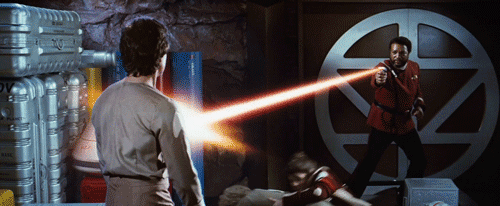Various forms of Star Trek secondary media - Starfleet Battles, the Starfleet Command videogames (including Starfleet Command 3, which is set in the mainline canon rather than SFB) and Star Trek Online give Trek shields facings. Assuming a four facing shield, this means that if you're doing a basic SFB-style overrun attack, your initial crunch alpha hits the front shield and then your follow-up phaser shots mildly tickle the target's rear shield.
Moreover, those phasers are eating power, power which can be assigned to other things like shields, electronic warfare, shield reinforcement, or whatever other bits and bobs your ship has, but they aren't helping you crunch through the weak shield your photons have created.
Being able to use aft phasers against the same target in a straight-line attack isn't as helpful as it seems, given this, and taking away power from other systems might actually be too much of an opportunity cost.


